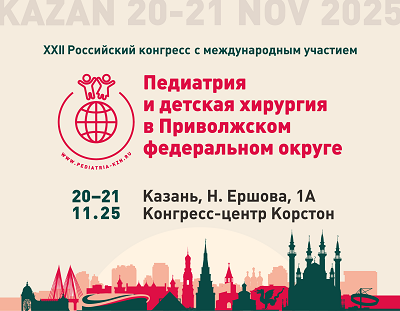The role of endothelial dysfunction in kidney damage in children with type 1 diabetes mellitus
https://doi.org/10.21508/1027-4065-2025-70-5-70-78
Abstract
Diabetes mellitus is a disease accompanied by the development of various complications, one of which is diabetic nephropathy.
Objective: to determine the clinical and diagnostic value of endothelial dysfunction in children and adolescents with type 1 diabetes mellitus.
Material and methods. The study included 87 children with type 1 diabetes mellitus, the control group consisted of 21 conditionally healthy children. All patients with type 1 diabetes mellitus were divided into two groups depending on the presence or absence of signs of kidney damage. Special research methods included determining the concentration of endothelin 1 and nitric oxide (NO) in blood plasma.
Results. A statistically significant increase in the level of endothelin 1 and NO in plasma was revealed in children with type 1 diabetes mellitus compared to the control group (p<0.001). When analyzing the level of endothelin 1 in blood plasma, it should be noted that it increases as chronic kidney disease progresses (p<0.001). In the group of children with type 1 diabetes without kidney damage, a statistically significant increase in NO levels was noted, followed by a decrease as chronic kidney disease progressed (p<0.001). In children with hyperfiltration, endothelin 1 and NO levels were statistically significantly higher compared to children with type 1 diabetes without kidney damage (p<0.001). Dyslipidemia plays an important role in the development of vascular complications of diabetes. In children with type 1 diabetes and dyslipidemia, the endothelin 1 level was significantly higher compared to children with type 1 diabetes without dyslipidemia (p=0.046). A prognostic model was developed to determine the probability of kidney damage in children with type 1 diabetes depending on the concentration of low-density lipoprotein in the blood.
Conclusions. The study of endothelial dysfunction markers (endothelin 1 and NO) in the blood has diagnostic significance in the formation and progression of chronic kidney disease in children with type 1 diabetes. Hyperfiltration is an early predictor of diabetic nephropathy formation at the preclinical stage of the disease.
About the Authors
T. P. MakarovaRussian Federation
420012, Kazan; 420138, Kazan
M. A. Petrova
Russian Federation
420012, Kazan; 420138, Kazan
Yu. S. Melnikova
Russian Federation
420012, Kazan
M. R. Shaidullina
Russian Federation
420012, Kazan; 420138, Kazan
References
1. Dedov I.I., Shestakova M.V., Vikulova O.K., Isakov M.A., Zheleznjakova A.V. Atlas of the diabetes register of the Russian Federation. Status 2018. Saharnyj diabet. 2019; 22(2S):4–61. (in Russ.). DOI: 10.14341/DM12208
2. Popyhova Je.B., Stepanova T.V., Lagutina D.D., Kirijazi T.S., Ivanov A.N. The role of diabetes mellitus in the development of endothelial dysfunction. Problemy Jendokrinologii. 2020; 66(1): 47–55. (in Russ.). DOI: 10.14341/probl12212
3. Dedov I.I., Shestakova M.V., Vikulova O.K., Zheleznjakova A.V., Isakov M.A. Epidemiological characteristics of diabetes mellitus in the Russian Federation: clinical and statistical analysis based on the Federal Diabetes Register as of 01.01.2021. Saharnyj diabet. 2023; 24(3): 204–221. (in Russ.). DOI: 10.14341/DM12759
4. Shuckaja Zh.V. Diabetic nephropathy in children and adolescents: features of diagnosis and treatment. Pediatrija im. G.N. Speranskogo. 2009; 87(3): 100–104. (in Russ.)
5. Caramori M.L., Fioretto P., Mauer M. Low glomerular filtration rate in normoalbuminuric type 1 diabetic patients: an indicator of more advanced glomerular lesions. Diabetes. 2003; 52(4): 1036–1040. DOI: 10.2337/diabetes.52.4.1036
6. Wang K., Hu J., Luo T., Wang Y., Yang S., Qing H. et al. Effects of Angiotensin-Converting Enzyme Inhibitors and Angiotensin II Receptor Blockers on All-Cause Mortality and Renal Outcomes in Patients with Diabetes and Albuminuria: a Systematic Review and Meta-Analysis. Kidney Blood Press Res. 2018; 43(3): 768–779. DOI: 10.1159/000489913
7. Peterkova V.A., Shestakova M.V., Bezlepkina O.B., Laptev D.N., Kuraeva T.L., Majorov A.Ju. et al. Type 1 diabetes mellitus in children. Saharnyj diabet. 2020; 23(1S):4–40. (in Russ.). DOI: 10.14341/DM12504
8. Samoljuk M.O., Grigor’eva N.Ju. Assessment of endothelial dysfunction and possibilities of its correction in patients with cardiovascular diseases at the present stage. Kardiologija. 2019; 59(3S):4–9. (in Russ.). DOI: 10.18087/cardio.2524
9. Durnikina E.N., Bokov D.A, Grebennikova I.V. Pathophysiology of nephropathies in diabetes mellitus. Materialy MSNK “Studencheskiy nauchnyy forum 2025”. 2022; (13):15–17. (in Russ.)
10. Fato B.R., Beard S., Binder N.K., Pritchard N., Kaitu’u-Lino T.J., de Alwis N. et al. The Regulation of Endothelin-1 in Pregnancies Complicated by Gestational Diabetes: Uncovering the Vascular Effects of Insulin. Biomedicines. 2023; 11(10): 2660. DOI: 10.3390/biomedicines11102660
11. Shestakova M.V. Endothelial dysfunction — cause or consequence of metabolic syndrome? RMZh. 2001; 2: 88. (in Russ.)
12. Polyakov V.K., Shutrova A.V., Bolotova N.V., Filina N.Yu., Raygorodskaya N.Yu., Dronova E.G. Diagnosis of diabetic nephropathy and chronic kidney disease in prepubertal children with type 1 diabetes mellitus. Rossiyskiy Vestnik Perinatologii i Pediatrii (Russian Bulletin of Perinatology and Pediatrics). 2022; 67(1): 82–88. (in Russ.) DOI: 10.21508/1027-4065-2022-67-1-82-88
13. Umnjagina I.A., Blinova T.V., Strahova L.A., Troshin V.V., Ivanova Ju.V., Sorokina E.I. Endothelin-1 as a risk factor for cardiovascular pathology in young and middle-aged people working in hazardous conditions. Analiz riska zdorov’ju. 2021;(2): 105–113. (in Russ.). DOI: 10.21668/health.risk/2021.2.10
Review
For citations:
Makarova T.P., Petrova M.A., Melnikova Yu.S., Shaidullina M.R. The role of endothelial dysfunction in kidney damage in children with type 1 diabetes mellitus. Rossiyskiy Vestnik Perinatologii i Pediatrii (Russian Bulletin of Perinatology and Pediatrics). 2025;70(5):70-78. (In Russ.) https://doi.org/10.21508/1027-4065-2025-70-5-70-78










































